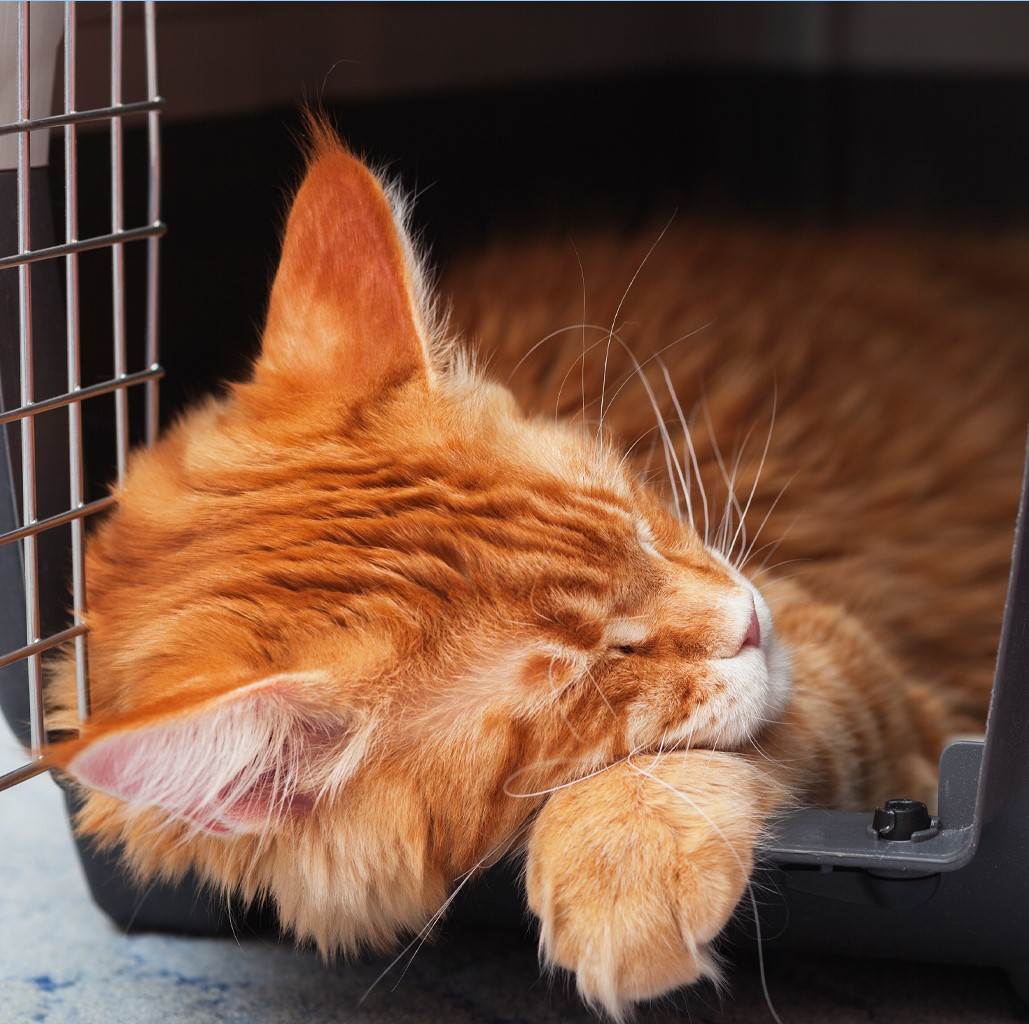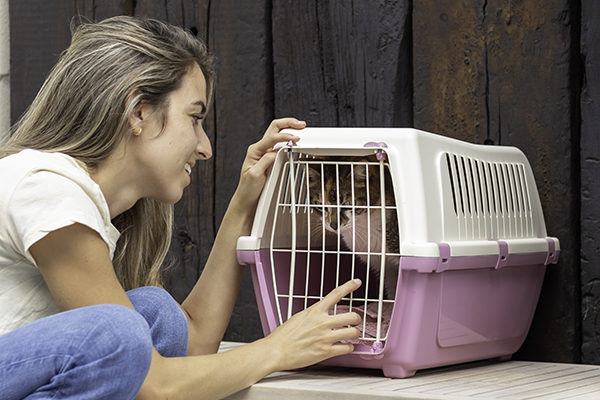Moving with cats: transitioning to a new home
A move to a new home is often an exciting time. Perhaps there is a new neighbourhood to explore, new rooms to decorate, and new neighbours to get to know. But, even the smoothest relocations come with a certain amount of upheaval as boxes of possessions are packed and transported to the new spot. It is also important to remember that moving a household can be very stressful to our pets.

Cats, in particular, are notoriously territorial and can be resistant to change. They have their familiar habits and routines along with favourite spots in the house, which maintains their sense of security. Limiting your cat’s stress around a move means trying to keep some level of familiarity and paying extra attention to their safety. A successful transition can also help prevent the development of fear-based anxieties or negative behaviours in your new home. Giving your cat a little extra attention before, during, and after your move will help to ensure that everyone settles happily in the new home for years to come.
Before the move
Your cat may begin to feel the disruptions to come long before your moving day. Extra visits from strangers, the packing up and removal of furniture and other possessions all might increase your pet’s sense that big changes are afoot. Our pets can often feel when we are under stress, so try to remain calm and positive with your cat. Try to keep to your cat’s regular routine of feeding, playtime, etc. as much as possible. Creating a ‘safe space’ for your cat with a favourite toy or blanket in a quiet part of the house might help if the increased activity in the home is causing stress. This is also a good time to get your cat comfortable with the pet carrier. Make it an enticing space by keeping the door open and placing a favourite toy or some treats inside.
During the move
Everyone will be busy on moving day, so be sure that the cat is comfortable and safe throughout the day. It is very important at this time to warn everyone entering and exiting your home that there is a cat inside, so doors won’t be left open, potentially allowing your cat to escape. Feeding a small meal is advised, particularly if your cat has a history of becoming carsick. Extra stress can lead to stomach upset in cats and reducing food a bit on this day could help prevent vomiting. If possible, keep your cat and the open pet carrier in a closed room (again, being sure to alert others that the cat is inside) with a few toys while the house is being packed up. Wait as long as you can to put the cat in the carrier in order to limit their time being contained. Once you are on the road, resist the urge to let your cat out of the carrier to comfort them, even if they sound distressed, to eliminate the chance of the cat bolting from the vehicle.

After the move
At the new home, try to unload furniture for one room that can be closed off (a bedroom or even a bathroom), and put the cat in there with the door to remain closed. Offer some favourite food or treats, a familiar blanket, and some toys. Project a feeling of calm confidence and spend a little time with your cat. Once the move is over, you can slowly increase the amount of space you give the cat. It might be too overwhelming to just let them roam free throughout the new space, so move slowly and allow the cat to get acclimated to a few rooms at a time. Letting your cat dictate the timeline can help ensure they move forward with confidence instead of fear. Use a few treats to entice the cat to explore different parts of the house but remember that they may want to stay in their safe space for a while. Leaving a t-shirt or pair of socks with your scent around might also help comfort your cat. Depending on where you want to keep the litter box, you could start with one in the safe space and one in the permanent space. As the cat becomes more comfortable moving about the house, take away the litter box from the safe space. If you have an outdoor cat, it is recommended that you keep the cat indoors for two weeks, so they will be acclimated to the new home. Take note of other cats in the area and stay alert for noises of conflicts when your cat is out.
These tips can help ensure your cat adjusts to the move and your new home without undergoing undue stress. Moving to a new home is really a big deal for cats: it's not only stressful but affects also their sense of security because they are very location-bound. Being aware of and watching for signs of stress or anxiety such as changes in appetite, activity level, or an increase in negative behaviours like spraying, scratching, or biting can allow you to counter these changes quickly. Before you know it, you and your cat companion will be comfortably establishing new routines and enjoying your new home.


